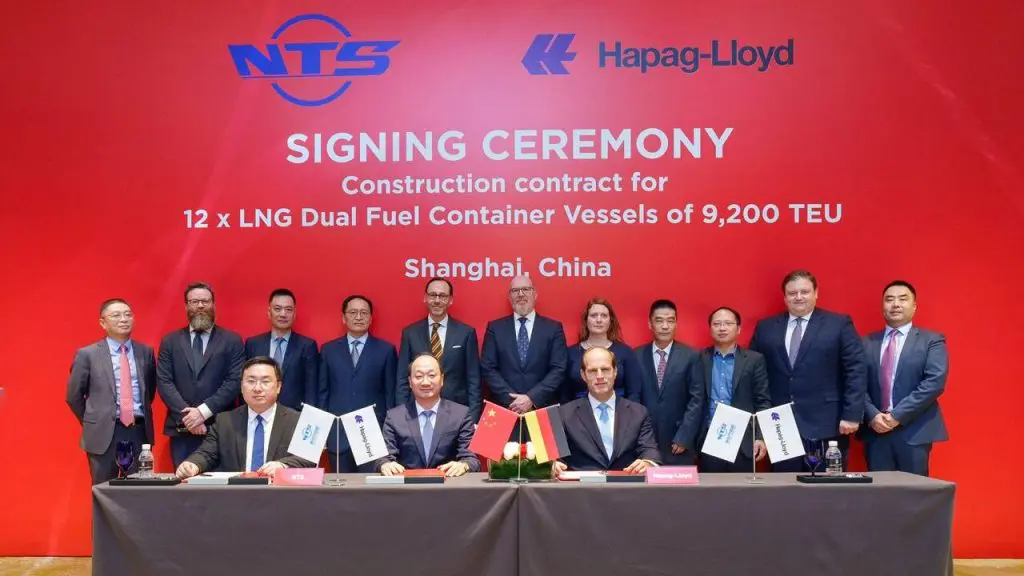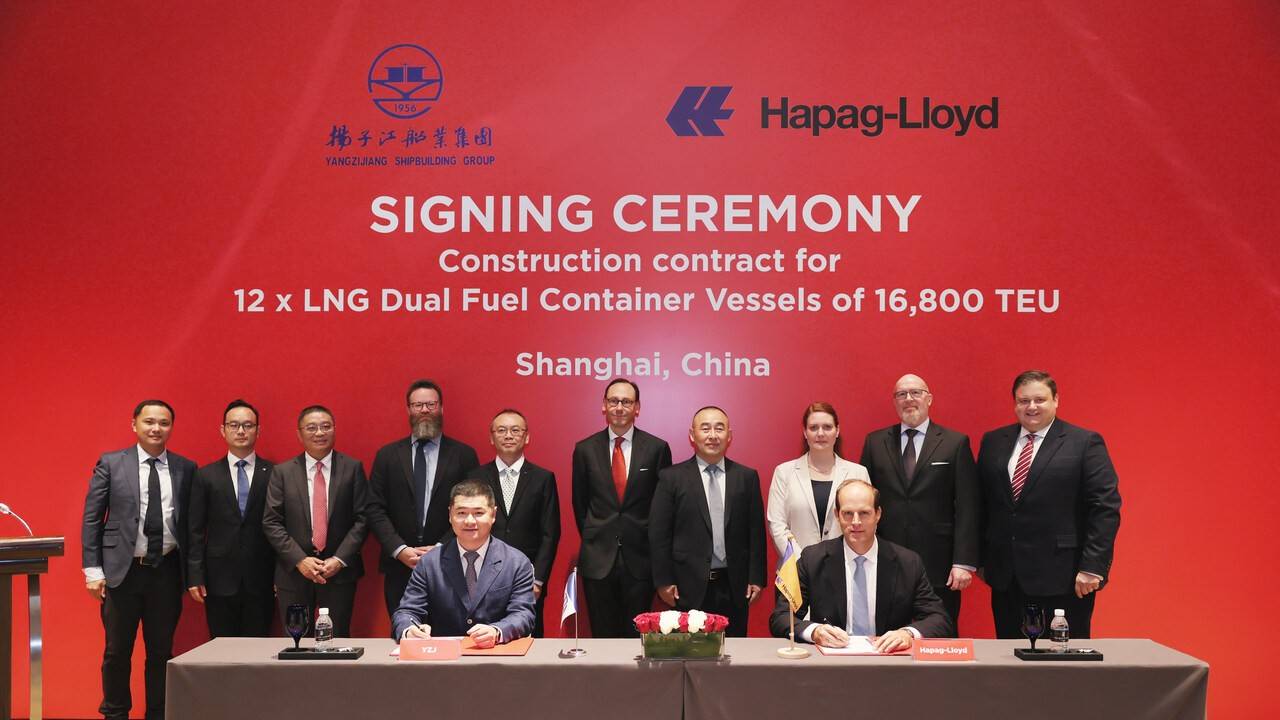This story requires a subscription
This includes a single user license.
Of these, Yangzijiang Shipbuilding will build 12 vessels each with a capacity of 16,800 teu, according to a statement by Hapag-Lloyd.
These units will be used to expand the capacity of services that are already in place.
An additional 12 ships, each with a capacity of 9,200 teu, have been ordered from New Times Shipbuilding.
Moreover, these vessels will replace older units in the Hapag-Lloyd fleet that will be nearing the end of their service life in this decade.
All of the newbuildings will be equipped with high-pressure LNG dual-fuel engines that are “extremely” fuel-efficient.
In addition, these vessels can be operated using biomethane, which can reduce CO2e emissions by up to 95 percent compared to conventional propulsion systems, Hapag-Lloyd said, adding that the new ships will also be ammonia-ready.
Hapag-Lloyd will take delivery of the new vessels between 2027 and 2029.
The newbuildings will have a combined capacity of 312,000 TEU and involve a combined investment volume of around $4 billion.
According to Hapag-Lloyd, a long-term financing of $3 billion has already been committed.

“This investment is one of the largest in the recent history of Hapag-Lloyd, and it represents a significant milestone for our company as it pursues the goals of its strategy 2030, such as to grow while also modernizing and decarbonizing our fleet,” Rolf Habben Jansen, CEO of Hapag-Lloyd said.
“Operating a fleet of more efficient vessels will also enhance our competitive position, and thanks to the increase in capacity, we will continue to offer our customers a global, high-quality product,” he said.
Hapag-Lloyd controls 287 containerships with a total transport capacity of 2.2 million teu.
It operates the largest fleet sailing under the German flag.
LNG-powered fleet
LNG Prime was the first to report in September, citing shipping sources, that Hapag-Lloyd signed a letter of intent with Yangzijiang Shipbuilding for LNG dual-fuel containerships.
These new vessels add to a fleet of LNG dual-fuel ships.
In August, the shipping firm took delivery of its seventh of 12 ultra-large LNG-fueled containerships from South Korea’s Hanwha Ocean.
These giant vessels are about 400 meters long and 61 meters wide.
Hapag-Lloyd first ordered six LNG dual-fuel containerships from Hanwha Ocean in 2020, while it added six more sister vessels in 2021. The orders are worth about $2 billion.
Hapag-Lloyd expects to take delivery of the remaining vessels in 2024 and 2025.
In addition to newbuild vessels, Hapag-Lloyd operates the converted containership Brussels Express, the world’s first ultra-large containership LNG retrofit.
In April, this vessel completed what Hapag-Lloyd claims is the largest ship-to-ship bio-LNG bunkering operation in the Dutch port of Rotterdam.
Hapag-Lloyd is also working on a synthetic methane project to further reduce emissions from its fleet of LNG-powered containerships.
The company’s LNG bunker consumption totaled 22,769 tonnes in 2023. This compares to 4,582 tonnes in 2022.

